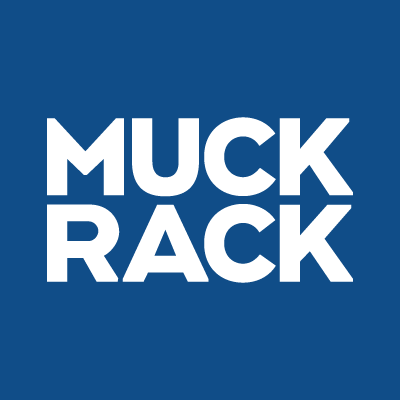How E.l.f. is using humor and hard data to push for boardroom diversity
Before launching a viral campaign that would jolt corporate boardrooms, E.l.f. Beauty faced a familiar problem: a lack of data—and an even bigger lack of direction on how to turn that data into action. To tackle both, the beauty brand enlisted help from Oberland, a New York-based creative agency. After sifting through more than 35,000 data points on board diversity, the Oberland team started asking a different kind of question—not just what the numbers said, but how to make them matter. They found inspiration in an infamous 2015 New York Times analysis known as the “John study,” which revealed that more Fortune 500 CEOs were named John than were women. “We said, ‘What if we modernize this? What if we think about this in terms of boardrooms?’” recalled Kate Charles, Oberland’s chief strategy officer, speaking at Fast Company’s Most Innovative Companies Summit in New York last week. The result was both irreverent and revealing: a campaign called “So Many Dicks” that exposed a striking imbalance—there are more men named Dick on corporate boards than there are entire underrepresented groups. “We had to break the malaise,” Charles said. “We wanted to do it in a way that had a shocking statistic like the ‘John study,’ but also carried a clear call to action.” “And that’s exactly what happened,” added Laurie Lam, E.l.f.’s chief brand officer. “We had to do something sticky, something memorable, something disruptive—and it caught fire.” CEO Buy-In While the “so many Dicks” campaign was what really “caught fire,” it’s not even the first piece of a larger initiative the company has dubbed “Change the Board Game,” Lam told the audience during the panel discussion. The Oakland, California-based company recently celebrated 25 consecutive quarters of net sales growth, she said, which is why the campaign also connects how embracing diversity in a company and boardroom is the profitable thing to do. Lam credited E.l.f.’s CEO, Tarang Amin, with leading the cause by fundamentally understanding why it’s so important to champion diversity and ensure it’s not a “check-the-box sort of thing,” but rather the ethos and core purpose a company is built upon. And, in that way, it’s not difficult to achieve diversity if there’s intentionality, she said. “Every single day, we walk that talk,” Lam said. “It’s rooted in the culture of who we are—that diversity matters, that we are rooted in positivity, inclusivity, accessibility, that makes it easy.” Messaging Matters Of course, there’s been pushback—both long-standing and more recently—to diversity-focused efforts, which Charles said is “weird,” given the results. “There’s so much proof to show that when you have a diverse board, diverse leadership, diverse base, that you’re all succeeding, you’re more profitable, including Dicks,” she added. “It’s really good for everybody.” But the messaging also mattered. The campaign could have been called “too many Dicks” or “don’t be a Dick,” Charles shared, and opting for “so many Dicks” was very intentional, along with a subhead that reads: “So few of everyone else.” The goal was to be inclusive. “We wanted to make sure that men felt okay to stand up for this and that they didn’t feel like they were being called out, that they were being called in,” Charles said. “And we wanted other organizations to say, ‘I want to be a part of that.’” Future of DEI For a duo who has put so much energy behind supporting diversity, it might come as a surprise that neither Lam nor Charles think the DEI acronym—short for diversity, equity, and inclusion—is necessary to advance efforts. “I don’t think it needs to be an acronym,” Lam told the audience. “I think it just becomes a way of modeling a culture that is inclusive of everyone and it stops creating these sort-of lines in the sand of who it is.” Part of the problem, Charles added, is the acronym has been weaponized as a term that’s “attacking meritocracy” and it might be good to decouple the words from it. “People, and certainly leaders and brands, do believe in diversity—they do believe in equity, and they do believe in inclusion.” And by showcasing the impact diversity can have on a company’s performance, the more it can become a status quo—and something other companies want to emulate, the women said. “We don’t even have a DEI department, it doesn’t exist at E.l.f. because it exists in every single employee,” Lam said. “It is the job of every single employee to live the truth of the company.”

Before launching a viral campaign that would jolt corporate boardrooms, E.l.f. Beauty faced a familiar problem: a lack of data—and an even bigger lack of direction on how to turn that data into action.
To tackle both, the beauty brand enlisted help from Oberland, a New York-based creative agency. After sifting through more than 35,000 data points on board diversity, the Oberland team started asking a different kind of question—not just what the numbers said, but how to make them matter.
They found inspiration in an infamous 2015 New York Times analysis known as the “John study,” which revealed that more Fortune 500 CEOs were named John than were women. “We said, ‘What if we modernize this? What if we think about this in terms of boardrooms?’” recalled Kate Charles, Oberland’s chief strategy officer, speaking at Fast Company’s Most Innovative Companies Summit in New York last week.
The result was both irreverent and revealing: a campaign called “So Many Dicks” that exposed a striking imbalance—there are more men named Dick on corporate boards than there are entire underrepresented groups.
“We had to break the malaise,” Charles said. “We wanted to do it in a way that had a shocking statistic like the ‘John study,’ but also carried a clear call to action.”
“And that’s exactly what happened,” added Laurie Lam, E.l.f.’s chief brand officer. “We had to do something sticky, something memorable, something disruptive—and it caught fire.”
CEO Buy-In
While the “so many Dicks” campaign was what really “caught fire,” it’s not even the first piece of a larger initiative the company has dubbed “Change the Board Game,” Lam told the audience during the panel discussion. The Oakland, California-based company recently celebrated 25 consecutive quarters of net sales growth, she said, which is why the campaign also connects how embracing diversity in a company and boardroom is the profitable thing to do.
Lam credited E.l.f.’s CEO, Tarang Amin, with leading the cause by fundamentally understanding why it’s so important to champion diversity and ensure it’s not a “check-the-box sort of thing,” but rather the ethos and core purpose a company is built upon. And, in that way, it’s not difficult to achieve diversity if there’s intentionality, she said.
“Every single day, we walk that talk,” Lam said. “It’s rooted in the culture of who we are—that diversity matters, that we are rooted in positivity, inclusivity, accessibility, that makes it easy.”
Messaging Matters
Of course, there’s been pushback—both long-standing and more recently—to diversity-focused efforts, which Charles said is “weird,” given the results.
“There’s so much proof to show that when you have a diverse board, diverse leadership, diverse base, that you’re all succeeding, you’re more profitable, including Dicks,” she added. “It’s really good for everybody.”
But the messaging also mattered. The campaign could have been called “too many Dicks” or “don’t be a Dick,” Charles shared, and opting for “so many Dicks” was very intentional, along with a subhead that reads: “So few of everyone else.”
The goal was to be inclusive. “We wanted to make sure that men felt okay to stand up for this and that they didn’t feel like they were being called out, that they were being called in,” Charles said. “And we wanted other organizations to say, ‘I want to be a part of that.’”
Future of DEI
For a duo who has put so much energy behind supporting diversity, it might come as a surprise that neither Lam nor Charles think the DEI acronym—short for diversity, equity, and inclusion—is necessary to advance efforts.
“I don’t think it needs to be an acronym,” Lam told the audience. “I think it just becomes a way of modeling a culture that is inclusive of everyone and it stops creating these sort-of lines in the sand of who it is.”
Part of the problem, Charles added, is the acronym has been weaponized as a term that’s “attacking meritocracy” and it might be good to decouple the words from it. “People, and certainly leaders and brands, do believe in diversity—they do believe in equity, and they do believe in inclusion.”
And by showcasing the impact diversity can have on a company’s performance, the more it can become a status quo—and something other companies want to emulate, the women said.
“We don’t even have a DEI department, it doesn’t exist at E.l.f. because it exists in every single employee,” Lam said. “It is the job of every single employee to live the truth of the company.”



























































































![[PATREON EXCLUSIVE] The Power of No: How to Say It, Mean It, and Lead with It](https://tpgblog.com/wp-content/uploads/2025/06/just-say-no.jpg?#)
























































